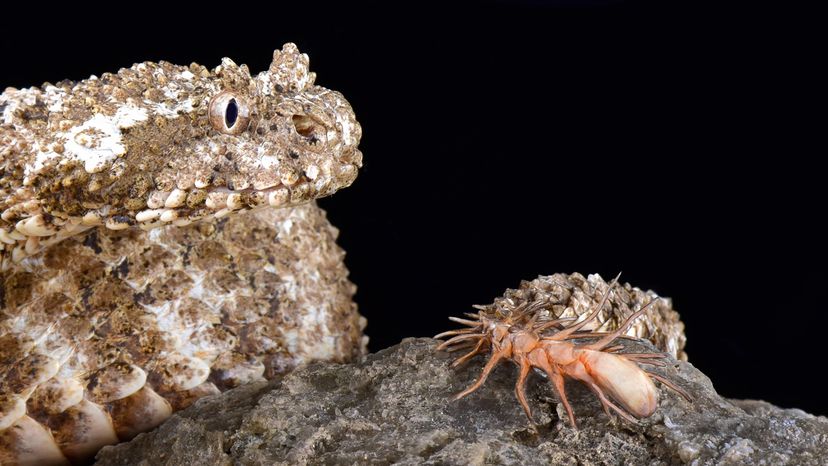Named a new species in 2006, a spider-tailed viper's tail resembles a spider. In the 1970s, when scientists came across the reptile, also known as the Iranian spider viper, they believed its tail was a mutation until they saw more horned vipers.
It shares similarities with other Pseudocerastes species, but it is hard to confuse because of its tail. Aside from elaborate tail ornamentation, it has another distinct characteristic: its horned appearance.
Measuring between 19.6 inches (50 centimeters) and 25.6 inches (65 centimeters) in length, it is a moderately sized snake that weighs about 1 pound. The scaly snake is gray or tan and is adept at camouflage.
Persian Horned Viper
While similar in size, the spider-tailed viper is not the same species as the Persian horned viper, also known as the false horned viper. Belonging to the Pseudocerastes species, it has horns but not a unique tail.
The horned adder is another snake that has horns but no spider-like tail.
